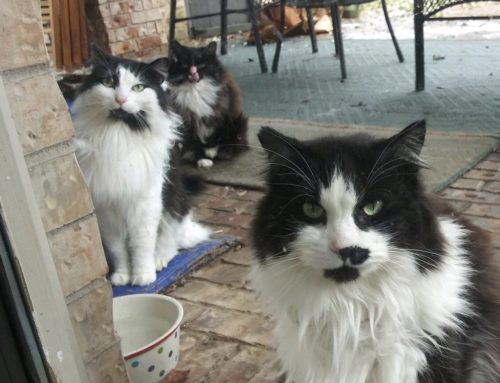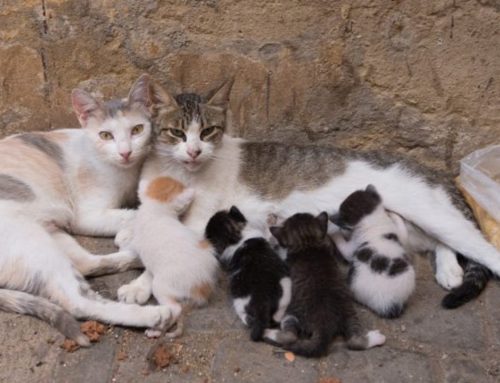Feral cats learn from an early age what it takes to survive in the different seasons, but stray cats may suffer quite a bit in extreme weather. Here are some ways to provide extra help during the winter months:
Stick with Dry Food
Wet food can easily freeze in cold weather!
Warm Up Food
If you must use wet food, heat it before putting it outside. Warm food doesn’t freeze as quickly as cold food.
Use Deep Water Bowls
Water has a harder time freezing at greater depths, so use a deep bowl and fill it up. Plastic is better than ceramic for preventing freezing, too.
Heat the Water
Outdoor cats need fresh water twice per day. Always heat the water before putting it outside, by zapping it in the microwave or using microwavable heating pads underneath the food bowl.
Build a Feeding Station
A feeding station is a great way to provide a community cat with food and water while keeping it out of the elements. It should be a closed shelter that keeps the weather out and allows the cat’s natural body heat to prevent food and water from freezing.
Keep Food and Water Separate
Don’t place food and water inside a cat’s primary shelter. If water spills inside the shelter, it won’t evaporate in cold weather and will make things much less comfortable.
Use Natural Surroundings
Create a shelter out of existing elements. For example, there might be a bit of space between the side of a garage and a hedge or fence. With a few DIY materials, you can create a nice little shelter there. If a cat has found its own shelter somewhere in your yard, see if you might be able to improve on it by providing additional cover and insulation.
Build a Shelter from Scratch
You can build a shelter from scratch using affordable materials like wood and straw. Look online for free plans. Keep the shelter small, just tall enough for the cat to stand up and only about 2 or 3 inches longer and wider than her body. The entrance to the shelter should be small as well, just big enough to allow the cat in and out. Some shelter designs also feature a rear exit, allowing for a quick escape if necessary.
Insulate the Shelter
Make sure the shelter is insulated. Straw is an excellent insulating material for both floor and walls. Do not use hay, as it absorbs moisture. You can also provide a cozy blanket for kitty to curl up on.
Consider Catnip
Despite everything you do to make a comfortable shelter, sometimes a cat just won’t use it. Placing a bit of catnip inside might do the trick!
Stay Ahead of the Snow
Be sure to keep the entrance to the shelter free of snow, so the cat isn’t trapped inside or unable to enter.
Make a Shelter First
A spayed or neutered cat is going to need some time to recover. Make sure you have a shelter in place before you go trap.
Check the Paws
A big problem for stray cats in the winter is damage caused by road salt. Make a point of checking the cat’s paws for the first few days after a snowstorm if salt was spread.
Watch the Weight
If you are putting out ample food and water and the cat is losing weight, she may be losing out to other animals that are consuming her food and water.
Watch for Injuries
Cats are territorial animals by nature and scuffles are common during the winter months when food and shelter are scarce. Keep an eye out for any injuries that may require veterinary care.





